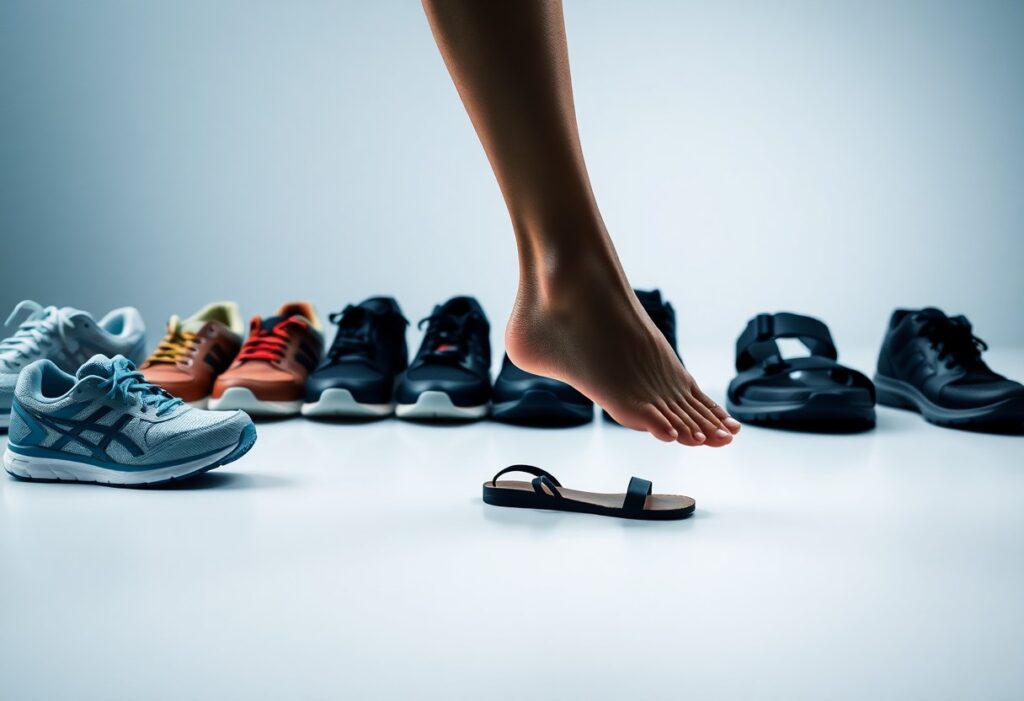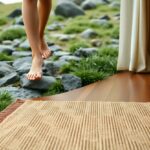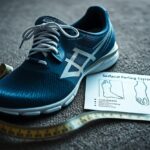
As you navigate through your day, the footwear you select can either substantially improve or adversely impact your foot health. Many people mistakenly believe that shoes designed with extra cushioning and support are the best remedy for foot discomfort; however, conventional shoes can often exacerbate existing issues. Dr. Alissa Kuizinas, a qualified podiatrist from Massachusetts, strongly supports the use of barefoot shoes or minimalistic footwear, indicating that they promote stronger and healthier feet. By choosing shoes that allow your feet to function naturally, you can significantly reduce the risk of developing foot problems and improve your overall foot wellness.
Recognizing the Limitations of Traditional Shoe Designs
While traditional shoes might provide temporary relief from foot pain, they frequently exacerbate pre-existing conditions and introduce new complications, as highlighted by Dr. Alissa Kuizinas. She points out that the $133 billion shoe industry often prioritizes style and profitability over genuine foot health, leading to designs that can constrict and weaken your feet over time. This dependency on conventional footwear can create a detrimental cycle that ultimately jeopardizes your foot health.
Examining the Shoe Industry’s Flawed Approach to Foot Health
At the heart of this issue is the shoe industry’s ineffective strategy for tackling foot health concerns, which typically emphasizes adding excessive cushioning, support, and rigid construction without addressing the fundamental causes of discomfort. Such a strategy can encourage a dependency on shoes that may inadvertently harm your foot health over time, resulting in various complications that could have been easily avoided.
Spotting the Shortcomings of Conventional Shoe Construction
Standard shoe designs often incorporate narrow toe boxes, stiff soles, and excessive cushioning that can restrict natural foot movement, leading to weak and dysfunctional feet. Dr. Kuizinas asserts that footwear should primarily protect your feet from external elements while allowing for natural movement. An ideal shoe design should emphasize natural foot function and incorporate minimalist features, such as roomy toe boxes, flexible and flat soles, and minimal cushioning, all of which are vital for maintaining foot health.
By adopting barefoot shoes or minimalistic footwear, you can actively fortify your feet and improve your overall foot health. Dr. Kuizinas promotes a philosophy of utilizing as little shoe as possible, allowing your feet to function naturally and move freely, which is essential for preserving healthy foot mechanics.
The Essential Importance of Natural Foot Movement for Well-Being
Footwear that limits your foot’s ability to move freely can result in various foot issues and discomfort. It’s crucial to assess how your shoe choices influence your overall foot health and comfort levels on a daily basis.
Evaluating the Impact of Footwear on Foot Mobility
To comprehend how shoes influence your foot’s mobility, it’s vital to scrutinize the specific designs and features of your footwear. Traditional shoes often include cushioning and support elements that can inadvertently hinder your foot’s natural movement, resulting in weak and dysfunctional feet over time. Such limitations can inhibit your feet from developing the strength and flexibility they need for optimal function.
Realizing the Benefits of Allowing Natural Foot Mobility
The benefits of permitting your feet to move naturally are extensive, as strong feet are fundamental to overall foot health. By choosing minimalistic shoes or barefoot footwear, you empower your feet to function naturally, which fosters strength and resilience over time.
Movement is vital for developing strong feet. When constrained by conventional shoes, you risk encountering a variety of foot problems and discomfort. In contrast, embracing minimalistic shoes or barefoot options can significantly improve your foot health by promoting natural movement and encouraging strength-building. By selecting appropriate footwear, you can reduce your risk of encountering foot issues and enhance your overall foot wellness.
Diving into the Benefits of Functional Footwear
Understanding the concept of functional footwear is essential, as these shoes emphasize both foot health and natural movement. Functional shoes are meticulously designed to allow your feet to operate as intended, eliminating the necessity for excessive support or confinement.
Characteristics That Define Functional Shoes
Upon researching and trying out various shoe styles, you’ll notice that functional footwear boasts distinctive characteristics, such as a wide toe box, flat and flexible soles, and minimal cushioning and support. These features enable your feet to move freely and naturally, enhancing their strength and functionality.
The Positive Impact of Functional Shoes on Foot Health
Wearing functional shoes brings numerous benefits, including enhanced foot strength, a lower risk of injury, and improved overall foot health. These shoes facilitate your feet in performing as they were designed to, paving the way for stronger feet and better balance in your everyday activities.
Essentially, functional footwear is crafted to support your feet without subjecting them to unnecessary constraints, allowing them to move and flex naturally. This design philosophy promotes optimal foot health and reduces the chances of developing foot ailments. By opting for functional shoes like barefoot shoes or minimalistic options, you actively encourage healthy foot function and lower the risk of foot pain and injury. Transitioning to functional footwear may require time and gradual adjustment, but the long-term advantages for your foot health are immeasurable.
Recognizing the Key Features of Functional Footwear
To attain optimal foot health, it’s vital to look for shoes equipped with specific features. The essential attributes to consider include:
- Wide toe box
- Flat and flexible soles
- Minimal cushioning and support
Being aware of these characteristics will greatly assist you in selecting shoes that promote healthy foot function and support.
The Significance of Wide Toe Boxes and Flexible Soles
An essential characteristic of functional shoes is a wide toe box, which allows your toes to spread naturally. This design feature helps prevent toe jamming and other discomfort-related issues that could result in chronic foot pain.
Understanding the Necessity for Minimal Cushioning and Support
In addition to a wide toe box, functional shoes should ideally feature minimal cushioning and support. This design element enables your feet to move naturally while strengthening foot muscles, thus diminishing the risk of foot issues.
It is crucial to underline that minimalistic footwear, including barefoot shoes, can greatly enhance your foot health by allowing your feet to function freely. By choosing shoes with minimal cushioning and support, you can bolster muscle strength in your feet and minimize the chances of injuries. This thoughtful approach not only improves your overall foot health but also reduces the likelihood of experiencing chronic pain. Therefore, prioritizing shoes that enable your feet to move naturally without excessive cushioning or support is essential.
Successfully Transitioning to Functional Footwear
Having recognized the significance of functional footwear, it’s time to begin your transition. Contrary to the common perception that more cushioning and support equate to greater comfort, you should opt for minimalistic shoes or barefoot options that facilitate your feet’s natural functioning.
Effective Strategies for Transitioning to Functional Footwear
Even if you have some reservations, start integrating functional shoes into your daily routine with these practical tips:
- Begin with short walks and gradually increase the distance
- Choose shoes with a wide toe box and flat soles
- Select minimal cushioning and support
The key is to give your feet time to adjust to the new shoes while strengthening the muscles in your feet.
The Importance of Patience and Gradual Adaptation
Transitioning to functional footwear requires patience and a gradual approach. Shoes that are overly minimal can lead to discomfort and pain if your feet are not accustomed to them. Starting slowly is crucial, enabling your feet to acclimate to the new footwear.
Footwear options such as barefoot shoes or minimalistic shoes can be extremely beneficial for your foot health, but it’s essential to introduce them gradually. Overuse or improper sizing can lead to injuries or ongoing discomfort. The ultimate goal is to enhance the strength of your foot muscles while improving your overall foot health, so be patient and avoid rushing through the process. The benefits will be significant; you can expect to experience improved balance, reduced pain, and stronger feet.
Building Strong and Functional Feet for Life
Even in a world dominated by shoes with excessive cushioning and support, you can cultivate strong and functional feet by choosing the right footwear.
Exploring the Connection Between Foot Strength and Overall Health
Alongside various health factors, foot strength plays a critical role in your overall well-being, affecting your balance, posture, and movement capabilities.
The Role of Functional Footwear in Developing Strong Feet
Functionally designed shoes that feature a wide toe box, flat and flexible soles, and minimal cushioning are vital for developing strong feet, as they promote natural movement.
Indeed, wearing functional shoes or barefoot shoes can significantly contribute to building stronger foot muscles and enhancing your overall foot health. By allowing your feet the freedom to move and function naturally, you can minimize the risk of foot problems and optimize your balance and stability. As you transition to minimalistic shoes, anticipate improvements in your walking technique and your general sense of well-being.
By taking control of your foot health, you can choose shoes that enhance your feet’s natural functions rather than hinder them. Opting for barefoot shoes or minimalistic options that allow your feet to operate naturally will promote strength over time. In doing so, you’ll gain increased stability and comfort during various activities, providing your feet the chance to develop strength and capability. Start your journey by selecting shoes with a wide toe box, flat and flexible soles, and minimal cushioning and support, while exercising patience as you transition to a more natural walking style.
The Article A Podiatrist’s Guide to How Shoes Affect Your Foot Health appeared first on My Shoes Finder
The Article How Shoes Impact Your Foot Health: A Podiatrist’s Insights Was Found On https://limitsofstrategy.com







Your exploration of the connection between footwear and foot health strikes a deeply personal chord with me. I, too, have navigated the often-misleading terrain of shoe selections, convinced that well-padded sneakers would alleviate my foot discomfort. However, it wasn’t until a few years back—during a hiking trip with friends—that I was introduced to the notion of barefoot shoes. Initially skeptical, I hesitated to abandon the cushioned support that felt like a safety net. But, as a couple of hours wore on and the trail demanded both balance and connection to the ground, I switched to a friend’s minimalistic pair. What a revelation!